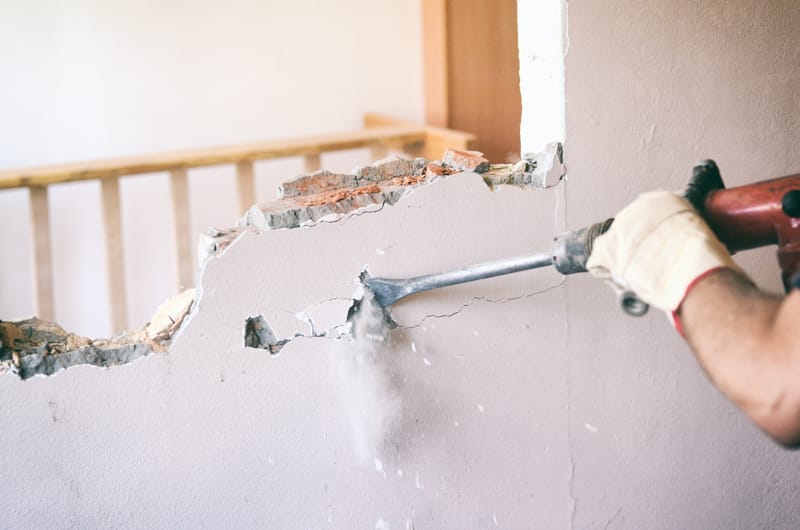Demolition

Safety Precautions:
- Before any demolition work begins, it's essential to ensure the safety of workers and nearby individuals.
- Hazardous materials like asbestos or lead may need to be identified and properly handled or removed before demolition begins.
- Safety equipment such as hard hats, gloves, goggles, and respirators may be required.
Permits and Regulations:
- Obtain any necessary permits and adhere to local regulations governing demolition work.
- Depending on the location and size of the project, there may be environmental regulations or restrictions to consider.
Site Preparation:
- Clear the area around the structure to be demolished, removing any obstacles or debris that could impede the demolition process.
- Erect temporary fencing or barriers to prevent unauthorized access to the demolition site.
Utilities Disconnect:
- Disconnect utilities such as water, gas, electricity, and sewer lines to the structure being demolished.
- Properly cap or seal off utility connections to prevent leaks or hazards during demolition.
Structural Assessment:
- Assess the structure to determine the safest and most efficient demolition methods.
- Identify load-bearing walls, support structures, and any potential hazards that need to be addressed.
Demolition Methods:
- Depending on the structure and site conditions, demolition methods may include:
- Manual Demolition: Using handheld tools and equipment to dismantle structures piece by piece.
- Mechanical Demolition: Employing heavy machinery such as excavators, bulldozers, or wrecking balls to knock down or tear apart structures.
- Controlled Demolition: Utilizing explosives or other specialized techniques to bring down structures in a controlled manner.
- Depending on the structure and site conditions, demolition methods may include:
Debris Management:
- As demolition proceeds, manage and dispose of debris in accordance with local regulations.
- Salvage materials that can be reused or recycled, such as lumber, metal, or fixtures.
Site Cleanup:
- Once demolition is complete, clear the site of remaining debris and hazardous materials.
- Level the ground and prepare it for any subsequent construction or landscaping activities.
Environmental Considerations:
- Address any environmental concerns such as soil contamination or erosion that may arise during or after demolition.
- Implement measures to mitigate dust, noise, and other potential impacts on the surrounding area.
Final Inspection and Documentation:
- Conduct a final inspection of the demolition site to ensure compliance with safety standards and regulations.
- Document the demolition process with photographs, reports, and any required paperwork for regulatory or insurance purposes.



